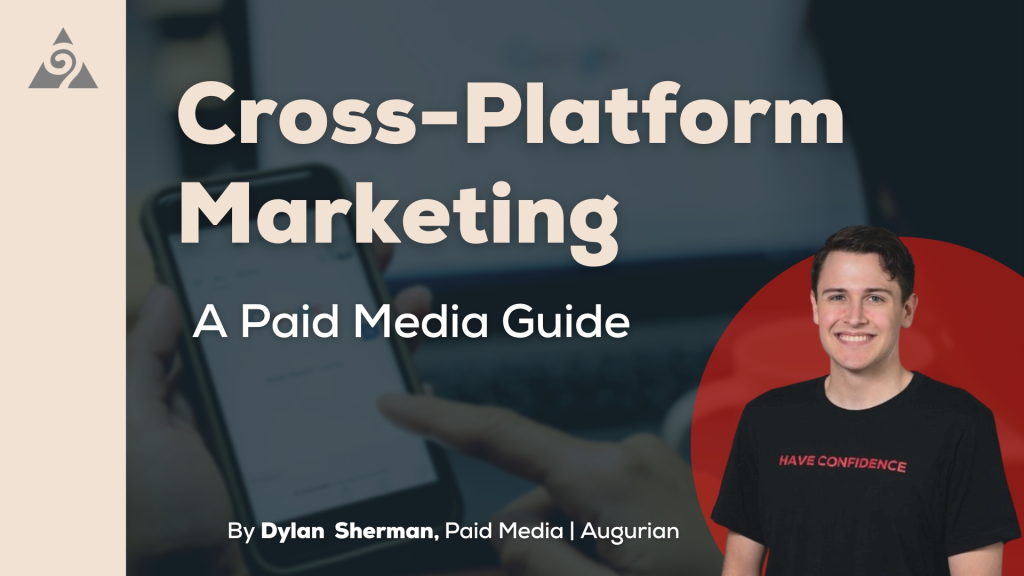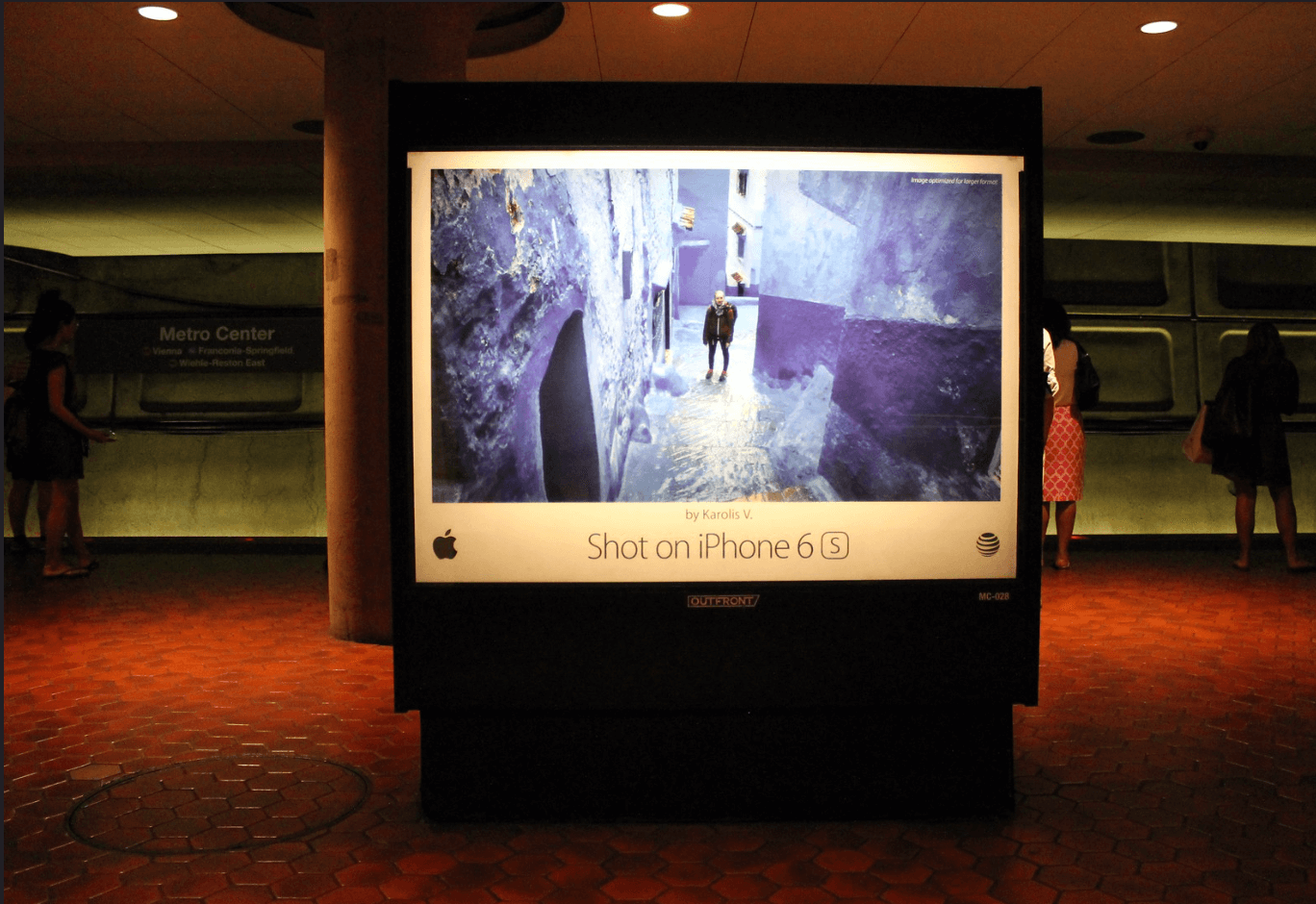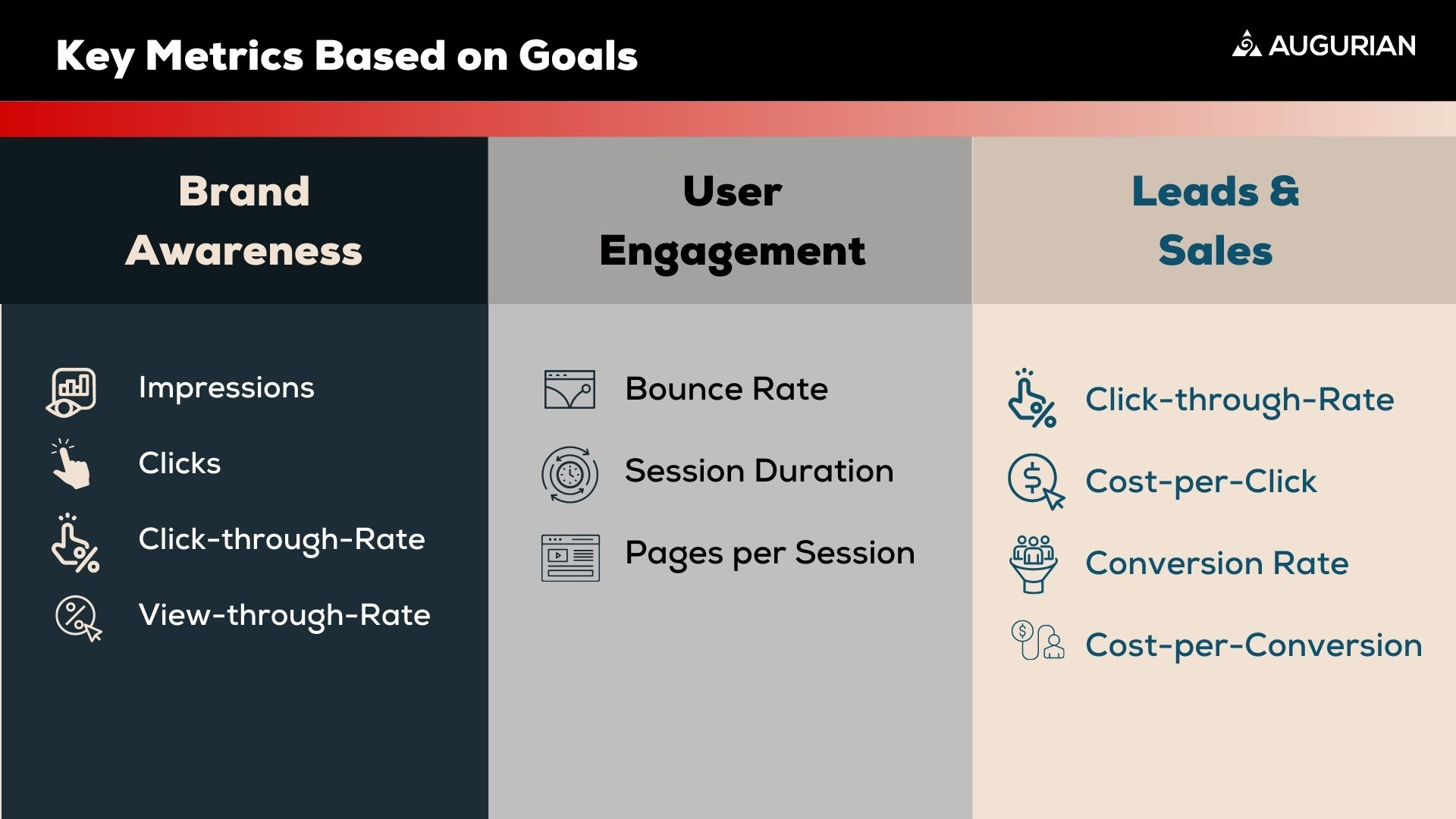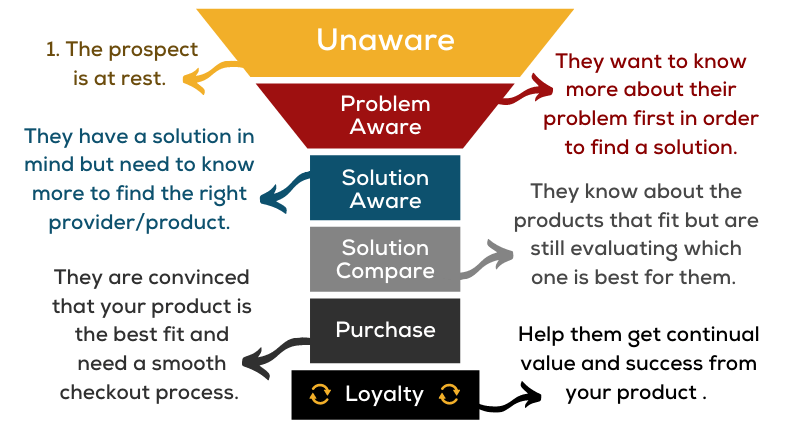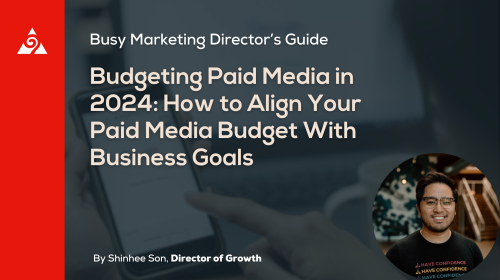As the digital landscape and the way users interact with it continue to evolve, it’s more important than ever to have a comprehensive marketing strategy. In this blog post, we will explore the benefits of cross-platform marketing and how you can use it to create a winning strategy for your brand.
Multi-platform marketing may seem overwhelming at first, but when utilized correctly, it offers a wide range of benefits, including increased brand awareness, extended reach, improved customer engagement, and greater flexibility in refining your marketing strategy.
- What is Cross Platform Marketing?
- Paid Media Platforms by funnel stage
- Benefits of Marketing Across Different Platforms
- An Example of Cross Platform Advertising
- Tips for Success with Cross Platform Marketing
What is Cross Platform Marketing?
Cross-platform marketing is a digital marketing strategy businesses use to meet their audience where they’re at while optimizing the KPIs they care about most. Marketers leverage platforms like paid search, social media, email, TV, and more to create several touch points between brand and consumer.
By creating a full-funnel, multi-touchpoint strategy, you can grow your market, increase brand awareness, drive more high-quality users to your website, gain more business, and retain that business.
The funnel stages and where different paid media platforms fit in
At Augurian, we generally like to group platforms into one of 3 funnel stages based on how users typically interact with content on the platform; however, there can be some overlap.
On TikTok, for example, users are usually scrolling, seeking entertainment, information, or new trends. By nature, TikTok is a platform that allows advertisers to introduce their brand to users for the first time. It is not a platform where users are in a shopping mindset; therefore, it falls into the awareness stage.
On the other hand, Google Search is a platform where users likely already know what they are looking for or have a problem and are seeking a solution. This makes Google Search fall into the conversion stage.
Unlock the full potential of your multi-channel marketing efforts with Augurian’s expert paid media services – contact us today for a personalized approach to your digital marketing strategy and learn more about our cross channel marketing services.
What are the Benefits of Marketing Across Different Platforms?
Today, there are more ways than ever to engage with users. Having a cross-platform marketing strategy to engage with those users at multiple steps comes with many benefits.
Here are the top 5 benefits of cross-platform advertising:
- Extended reach
- Building brand awareness
- Better targeting
- Optimize the customer journey
- Increased cross platform engagement
Extended reach
Not all of your potential customers are on one platform, and no one platform effectively reaches users at each stage of the funnel. Therefore, it’s important to deploy multiple channels to reach more users and reach them at the marketing stage you want.
Building brand awareness
Expose your brand to more users, create a consistent and cohesive message that connects your brand to your audience, and engage users with different ad formats such as text, image, and video.
Better targeting
Platform user bases vary significantly in age, gender, interests, and more. So, it’s vital to utilize the unique user bases of each platform to reach the right users for your brand.
Optimize for the customer journey
With a multi-platform marketing strategy, you can create a customizable customer journey with multiple touch points, from the moment a user is introduced to your brand to the moment they become a life-long customer.
Long term value
Multi-channel customers are very valuable. Users interacting with your content on a variety of platforms are much more likely to remember your brand and become loyal customers. Use your awareness campaigns to build remarketing audiences.
Cross Platform Advertising Example
One successful example of a cross-platform marketing campaign is Apple’s “Shot on iPhone” campaign. The campaign was launched in 2015 to showcase the camera capabilities of the iPhone and featured photos and videos taken by everyday iPhone users. Apple promoted the campaign through a variety of channels, including social media, billboards, TV commercials, and online ads.
By featuring user-generated content and leveraging multiple channels, Apple was able to engage with its target audience in a meaningful way, while showcasing the capabilities of its product. The “Shot on iPhone” campaign is a great example of how cross-platform marketing can be used to engage with users across the platforms that they care about.
Tips for Success with Cross Platform Marketing
To make the most out of your cross-platform marketing strategy, it’s important to follow some key tips for success. In the upcoming section, we’ll discuss these tips, which will help you create a comprehensive marketing plan that resonates with your audience and drives business growth.
From setting platform-specific goals to utilizing data, we’ll cover the top tips you need to know including:
- Creating buyer personas
- Picking the right channels
- Setting platform-specific goals
- Building your user journey funnel
- Aligning your content with the funnel stage
- Attribution
- Utilizing UTM tags
- Testing Testing Testing
- Using your data
Create customer personas.
It’s imperative to understand your customers before planning your marketing strategy. Do this by creating customer personas representing your customers’ demographics, interests, behaviors, and pain points. Use data on your current customers if you have it.
Find commonalities between them and group them into 3-8 personas. Doing this will help you understand your customers and allow you to tailor your messaging to what they care about. And it will help you decide what platforms and tactics to use to reach those audiences. The better you understand your audience, the better your marketing strategy will be.
Pick the right channels.
Now that you’ve created your customer personas, it’s time to decide where and how you want to reach your audience. This will vary greatly depending on your business.
- Think about what the average user base on each platform looks like.
- Think about how users engage with content on that platform.
- Think about what kind of actions you want users to take. Are you looking to create brand awareness? Are you looking to increase your sales? Are you looking to generate B2B leads?
For example, let’s say you’re promoting a small ecommerce business in the US, and one of your more prominent customer personas is Millennial women interested in beauty products. Your goal is to increase your brand’s awareness and sales. A few platforms that would work well together for this persona would be Google Search, Pinterest, and Facebook.
Almost always, Google Search can (and should) be a part of your marketing strategy. This is because nearly every kind of user is on Google, searching for something they want, looking for solutions to their problems, or exploring new ideas. This makes Google Search one of any business’s best bottom-funnel platforms.
Pinterest and Facebook will fill more of the mid to upper-funnel roles. Pinterest is a fantastic platform for brand awareness, especially for this example persona. Pinterest has a large user base of millennial women and is a platform where users are eager for new ideas.
In fact, 97% of Pinterest searches are unbranded, making it the perfect platform to introduce your brand to new users. In one instance, our agency put this to the test and found Facebook drove a 48% higher conversion rate at a similar cost compared to search.
Set platform-specific goals.
Now that you know what platforms to use to reach your audience, it’s time to set goals for the platforms and tactics you will be running. Think about what you hope to achieve with each platform and the KPIs you care about most. For example, if you’re using a platform and tactics suited for brand awareness, don’t expect it to drive a ton of sales.
For brand awareness, some metrics you should focus on are more engagement-related: Impressions, clicks, CTR, and view-through rate. You can also look at on-page data in GA to see how users interact with your site. For this, consider metrics like bounce rate, average session duration, and average pages per session.
If your main goal is to drive sales or leads, focus on metrics like click-through rate, cost per click, conversion rate, and cost per conversion. Understand the average for those metrics on each platform for your industry, so you can set realistic expectations and goals.
Explore our paid media wins – and learn how Augurian drives cross-platform success for our partners.
Build your user journey funnel.
Now you know who your audience is and where you want to reach them.
So let’s create a user journey funnel!
Starting at the top of the funnel with brand awareness, we want to introduce our products or services to users for the first time. Video is a great medium to introduce your brand to a user. Platforms like TikTok, YouTube, and Facebook offer great targeting options and relatively cheap methods of driving brand awareness through video. With this strategy in mind, we drove a 5-month high in ROAS with an upper funnel paid media campaign.
PPC Pro Tip: A user will often see your video and watch most of it but not click on it. That can be a good thing! If they watched your video and didn’t click on it, you just got that brand awareness without paying for their click. This makes video a great medium to grow brand awareness without having a huge budget allocated towards it.
The next stage of the sales funnel is consideration/conversion. For many businesses, this stage is their bread and butter. This phase is where you turn users into customers. Google search is powerful at this lower stage of the funnel.
Setting up the correct keyword targeting is vital to driving sales/leads. Use your customer personas to consider what users will search for when looking for your product/service. Put together a comprehensive list of keywords you want to target, and begin testing.
The final stage of the funnel is remarketing/loyalty. You already have a fair amount of customers at this stage – but you’d like to keep these customers! You want them to come back and buy another product. You want them to top up their subscription or use your services again.
This part of the funnel is powerful since a user who already knows your brand and has interacted with it is much more likely to interact with it again.
PPC Pro Tip: Always gather customer data and create audiences with them, if you can. With this, remarketing new products and promotions to these users will drive a lot of value for your business. A fantastic way to do this is through email. Unlike other forms of advertising, email is relatively inexpensive, and users already expect advertisements and promotions in their inboxes, making this an ideal platform for that kind of marketing.
Align your content with the right funnel stage.
Another essential tip is appropriately aligning your messaging, imagery, and calls to action with the funnel stage you are advertising at. For example, if you are focusing on the awareness stage, you should introduce your brand, your range of products/services, and the benefits you offer. You could highlight a problem your audience is encountering and how your brand can help.
At this stage, your calls to action should align with the content. Don’t throw “Shop Now” or “Contact Us Now” in the CTA of every ad. At this stage, we are looking for low-commitment starting actions from users. CTAs such as “Learn More” or “Download Our Free Resource” are more suitable for this upper funnel stage.
Once you’re in the mid to bottom-funnel stages, you can use your “Shop Now” or “Schedule a Consultation” calls to action. The messaging at this stage should also align with the CTAs. If your CTA is “Shop Now,” you better give users a reason to! Show them why your product is superior to your competitors or offer them a limited-time sale.
To build loyalty with returning customers, give them extra benefits for being loyal to your brand; offer them exclusive deals, prioritize access to new products/services, and make them feel special. Aligning your cross platform content with the funnel stage will create a better user experience and drive better performance for your company.
Attribution.
Attribution is hugely critical for understanding your customer journey and finding value in the different kinds of advertising that you are doing.
There are many different types of attribution models, such as
- First click: The first ad clicked receives 100% of the credit.
- Last click: The last ad clicked receives 100% of the credit.
- Linear: All touchpoints earn an equal % of the credit.
- Position-based: Most of the credit is given to the first and last touchpoints.
- Time decay: The most credit is given to the last touch, with a diminishing value assigned to earlier touchpoints.
- Data-driven: Gives credit based on how people engage with your ads using machine learning to determine which ones had the greatest impact.
(First click, linear, time decay, and position-based attribution models will be removed by Google starting in July 2023).
A user could interact with 10 of your ads on different platforms before finally converting. Understanding the value of each touchpoint is game-changing and will impact decision-making going forward. Your chosen attribution model will depend on your specific goals and multi channel marketing strategy.
Utilize UTM tags.
UTM tags are a fantastic tool to better understand your advertising efforts. UTM (Urchin Tracking Module) tags allow you to attach information to the users interacting with your ads based on which platform you reached them at, which campaign they interacted with, which specific ad they clicked on, and more.
These tags are significant to implement when creating multi platform marketing campaigns. UTM tags can also be used for A/B testing. By creating two ads with different UTMs, you can segment your data to see how the two ads compare against each other.
Ready to scale your advertising strategy? Our paid media agency experts can help you start.
Test, Test, Test.
This goes for any marketing strategy, but especially for cross-platform marketing. Always test new things. Whether you’re testing out different headlines for your ads, images, video styles, audience targeting, or platforms… You should ALWAYS be testing new ideas.
Running A/B tests is a tried and true method to improve your muilti platform advertising campaign’s performance and learn more about your business.
Use Your Data.
Data is the most powerful tool that marketers have to make any decisions. So whether planning out a new marketing strategy from scratch or looking for ways to improve your current strategy, you should use data to make those decisions.
Go beyond in-platform data. Use your connected analytics to gain insights into how your users engage with your website. Then, segment your data by what device users are on, the time of day or week they engaged with your multi platform content, or where your ad was placed on a platform.
Looking at your data in different ways can help you better understand your audience and optimize your campaigns to drive the best possible results.
Transform Your Cross Platform Marketing Campaigns With Augurian’s Proven Paid Media Strategies.
Cross-platform marketing is complex, and there are many necessary steps to setting yourself up for success. Still, when done well, your marketing strategy will become an omnichannel machine that introduces your brand to new users, influences them at the right moments, turns them into customers, and keeps them coming back for more.
Do you want to learn more or need help with your cross-platform marketing strategy? Then, visit our Paid Media Services page or explore our wins. Or, contact our team of experts to find out what we can do for you today and take your digital platform strategy to the next level.
Read more related blog posts:
- A Guide to Cross Platform Marketing with Paid Media - April 12, 2023
- The 8 Best PPC Networks in 2022 - January 26, 2022
